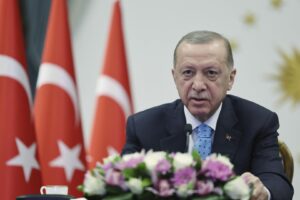- Afro-Colombian communities practicing mercury-free gold mining say a reform of the country’s mining industry is urgently needed, but aren’t convinced the new government can deliver.
- Gustavo Petro took office in 2022 as Colombia’s first-ever left-wing president, campaigning to end the use of mercury in mining and to formalize artisanal miners.
- Existing laws should in theory be sufficient to address both these issues, but enforcement remains sketchy, with many mining regions still in the control of criminal gangs and guerrilla groups.
- Colombia’s minister of mines, Irene Vélez, says the government is working to amend the laws, collaborate with local communities, and ensure the new Mining Code benefits all Colombians.
Funding for the research and writing of this series of articles was provided by Amazon Aid Foundation.
“We have to be very skeptical,” says Carlos Latorre, artisanal gold miner and the head of the Afro-Colombian mining company EMAGROAUP, as he talks about the plans that Colombia’s new government has for the country’s mining industry. Unlike most mining operations in Colombia’s Pacific region of Chocó, EMAGROAUP practices a form of mercury-free extraction with low environmental impact.
In this biodiversity hotspot that is also Colombia’s poorest department, communities like Latorre’s have been mining this way for generations. But an influx of migrants and guerrilla groups has brought mechanized methods and mercury to the region, especially in the Atrato River Basin, where fish have become heavily contaminated, threatening food security for local populations.
For miners like Latorre, change can’t come soon enough. In 2022, a left-wing government under President Gustavo Petro came to power pledging to transform Colombia’s mining industry. But despite promises to work with communities like Latorre’s and to protect ecosystems from mercury used to extract gold, it’s not clear what changes the Petro administration will bring; a staunch advocate of conservation and clean energy, Petro has touted plans for widespread legislative changes, including to the Mining Code, which could be rewritten and enacted within six months.
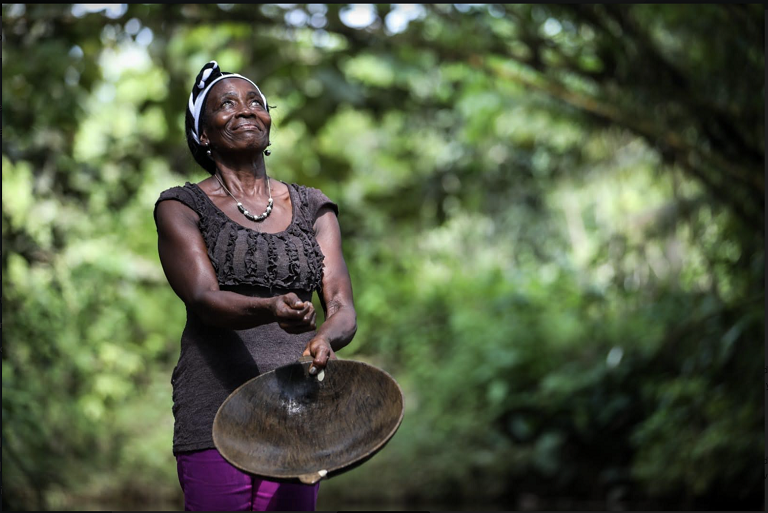
For years, Latorre has been frustrated by the preferential treatment the government gives multinational mining companies in Colombia. To become legal or formalized, mining operations must adhere to strict environmental and bureaucratic requirements set by the government, a process that can cost tens of thousands of dollars and require dozens of technical consultants. For operations like Latorre’s, making on average about $40 per week, that burden is too heavy to bear.
“To formalize [legalize], we have to do the exact same thing as a multinational company while paying as much in taxes,” Latorre says. “So, we ask ourselves, what’s the use of the government? To neglect the people or to support them?”
Latorre’s problems are compounded by geography: his small mining operation is located in a region largely in the grip of organized crime. While he says the gangs generally don’t enter his territory, when they do he has to pay them a fee or vacuna just to be able to live and work safely. And while formalizing won’t protect Latorre from the gangs, as a legal miner he can apply for financing and avoid harassment by law enforcement.
Latorre, whose community is 90% Afro-Colombian, says he hopes President Petro and Vice President Francia Márquez will look after small players like him. But he has his doubts, given Colombia’s history of favoring multinationals as well as a tendency to look the other way when it comes to illegal gold mining.
Fighting illegal mining
About 70% of Colombia’s gold production was mined illegally in 2020, affecting roughly 64,000 hectares (158,000 acres) of land, according to a report by the U.N. Office on Drugs and Crime (UNODC). About half of this illegal production is tied to criminal groups seeking to launder their proceeds through the international gold trade. As in all Amazonian countries, illegal gold mining in Colombia is linked to grave environmental degradation, including deforestation, biodiversity loss and habitat destruction.
If Petro has his way, that will soon stop. Last September, within a month of taking office, he authorized the armed forces to dynamite dredges used to mine gold illegally. The government’s actions in some regions, such as Antioquia, resulted in protests: miners staged a highway blockade, proclaiming Petro had failed to live up to campaign promises to support them. But Petro and his team haven’t relented. In early February, more than 100 Colombian soldiers confronted illegal miners with links to guerrilla groups in the forest region of Triángulo del Telembí, in the southwestern department of Nariño. As they blew up bulldozers used in illegal mining operations, they were met with resistance from locals supporting the miners.
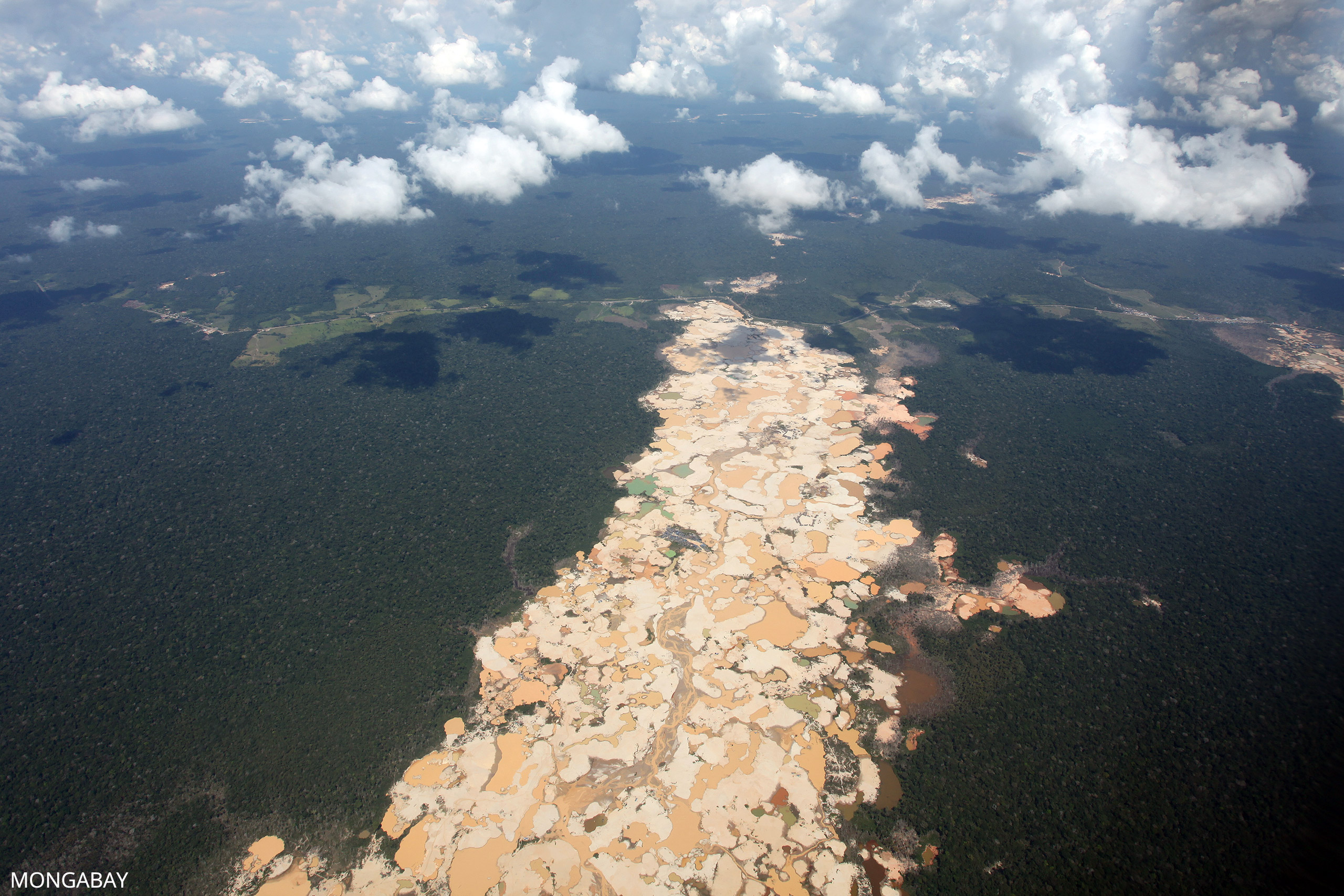
Petro’s minister of mines, Irene Vélez, is using a more delicate approach, one that involves broad consultation with diverse stakeholders. She attributes Colombia’s illegal mining to the country’s outdated mining policies, which she says disenfranchise small miners, making them vulnerable to criminal exploitation. Her ministry is planning legal reforms, including to the country’s Mining Code. To date, the government has consulted more than 14,000 people from local communities, NGOs and companies, aiming to draft and have Congress approve a new code as early as mid-2023.
The reform envisions better conditions for miners across Colombia, which requires greater formalization, Vélez tells Mongabay. “We trust that better socioeconomic conditions will persuade those who today exploit minerals illegally and use highly toxic compounds to move toward a regulated practice that complies with mining and environmental parameters.”
Vélez says she wants to reform the Mining Code for “all Colombians” while “making heard the voices of those who have historically been marginalized.” She says better solutions will come through a participatory process (a first for Colombia), drawing on the knowledge of communities that for generations have mined gold within their own territories.
Local rights need to matter
Another key figure behind the reform process is Francia Márquez, the country’s first Afro-Colombian vice president. Raised in the mountains of Cauca department, Márquez grew up working as an artisanal gold miner and received international recognition for her role in stopping paramilitary groups and the multinational company AngloGold Ashanti from mining in her hometown of La Toma.
Alongside reforming the Mining Code, Márquez has been leading a consultation process with Afro-Colombian communities in the Pacific region to update a 1993 law on land rights for Afro-Colombian communities. Under the law, communities like Latorre’s, many of which have been mining for generations, should have economic rights over their territory, including special provisions to conduct artisanal, non-mechanical mining.
But despite the law, forced displacement by criminal groups and multinational companies has persisted, and Latorre says his community has struggled to secure mining rights within their own territory. He and other community leaders from across the region sent the government a proposal to improve the law. The government says it has drafted changes to the law that will make it easier for Afro-Colombian miners to work legally within the new Mining Code.
Vélez says her ministry is also pushing ahead with a 2022 law on mining formalization, which establishes, among other things, streamlined procedures and government assistance to help miners formalize, as well as a circular economy for the sector that promotes clean reuse of mining tailings or waste. The law was passed in the final months of the previous administration, and the ministries of mines and the environment are now both working on a plan to implement the law.
Can small-scale mining get clean?
Not everyone finds the government’s commitments to both environmental protection and small-scale gold mining realistic.
“I don’t believe that artisanal and small-scale miners alone can do this,” says Marcello Veiga, a mining engineer from the University of British Columbia, Canada. “They need technical and financial support which I don’t see in the government … [Artisanal] mining is a good route but it’s not a sustainable one.”
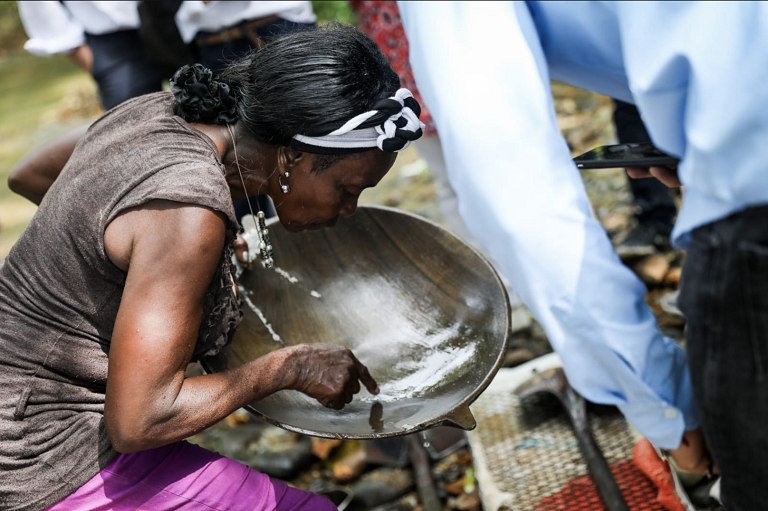
Veiga, who has decades of experience working with miners in Colombia, says a more feasible means of getting miners to work responsibly is the “coexistence model,” in which artisanal miners sell their ore to large-scale companies that have the resources and know-how to process it responsibly.
Veiga’s skepticism centers in part around mercury, which is used by most artisanal miners in Colombia. Despite being the first Latin American country to ban mercury use in mining, Colombia still ranks third globally in mercury emissions from gold mining and is the highest per capita emitter in the world. One of the World Health Organization’s top 10 most dangerous chemicals, mercury’s damaging — even fatal — effects on humans, animals and the environment are well-known.
“The fact that mercury is being used doesn’t mean it should continue to be used or that it must be used,” says Marcos Orellana, the U.N. special rapporteur on toxics and human rights.
Orellana praises Colombia’s mercury ban but criticizes the lack of enforcement capacity, which he says stems not from the Colombian government, but from the Minamata Convention, an international treaty intended to protect people and the environment from mercury’s adverse effects. Noting that the convention still allows for mercury’s legal use in small-scale mining, Orellana says it should be amended to make mercury use an environmental crime.
But until all 128 countries required to amend the Minamata Convention manage to agree, Colombia will need domestic solutions, at least in the short term, says Vélez.
“The use of mercury in mining in Colombia is an enormously complex problem,” she tells Mongabay. “Among other lessons, the legislation [mercury ban] active in Colombia has taught us that prohibition is not an effective method, because making the substance illegal creates irregular markets and criminalizes the miner, without offering solutions or methods to control contamination.”
Rather than rely on bans and military-backed enforcement, the new Colombian government is hoping to incentivize cleanly sourced gold through the creation of a national mineral company, a government-run buyer of gold and other minerals.
Under the current system, communities like Latorre’s in Chocó, which practice mercury-free mining, must sell their gold to a local intermediary, receiving as little as 60% of their gold’s value on the international market. A few initiatives are connecting miners like Latorre to jewelers and major refineries, but, due to the risks and higher premiums associated with sourcing schemes, demand for gold traded through such schemes remains low.
Vélez says she hopes the national mineral company can reward miners who practice cleaner mining techniques and follow government standards, but adds the international market also needs to step up by offering bonuses and support for miners who choose to work responsibly.
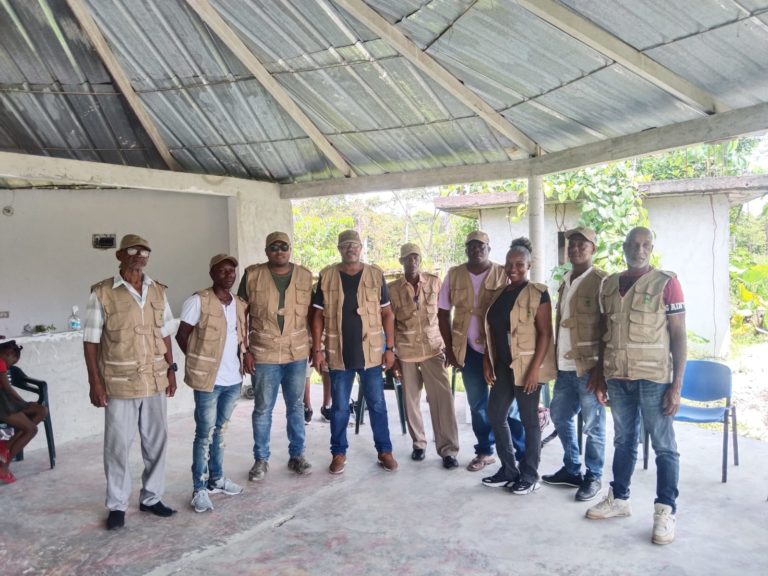
Controlling criminal activity and environmental degradation is even more difficult in Colombia’s remotest regions, especially in the Amazon, where a group of Indigenous communities sued the government in 2019 for allowing illegal mining and mercury dumping in their territories.
Vélez says her ministry, along with others, has been participating in Amazon Regional Roundtable discussions, which have included meetings with local Indigenous leaders and collectively deciding on how best to control “irregular mining activities” and their adverse effects on Indigenous communities.
“I seek a change in the mining and energy model that guarantees life and the ethnic and territorial rights of communities and respect for the environment,” she says. “That’s why we decided it was so urgent to reform the Mining Code.”
For his part, Latorre isn’t holding his breath. After decades of struggle against government neglect, his operation finally gained the right to mine in his territory in 2021, under a rare title granted to traditional miners. But after a long history of government neglect and preferential treatment for multinationals, Latorre says he refuses to buy the new government’s promises.
“There’s an old saying here,” he says. “Don’t expect fish to appear on the table if you don’t learn to catch it yourself.”
Citations:
Salazar-Camacho, C., Salas-Moreno, M., Paternina-Uribe, R., Marrugo-Negrete, J., & Díez, S. (2021). Mercury species in fish from a tropical river highly impacted by gold mining at the Colombian Pacific region. Chemosphere, 264, 128478. doi:10.1016/j.chemosphere.2020.128478
Veiga, M. M., Tarra A, J. A., Restrepo-Baena, O. J., & De Tomi, G. (2022). Coexistence of artisanal gold mining with companies in Latin America. The Extractive Industries and Society, 12, 101177. doi:10.1016/j.exis.2022.101177
Casso-Hartmann, L., Rojas-Lamos, P., McCourt, K., Vélez-Torres, I., Barba-Ho, L. E., Bolaños, B. W., … Vanegas, D. (2022). Water pollution and environmental policy in artisanal gold mining frontiers: The case of La Toma, Colombia. Science of The Total Environment, 852, 158417. doi:10.1016/j.scitotenv.2022.158417
Banner image: Small and artisanal gold miners in Colombia want their work formalized but they doubt that the government, which has long favored multinational companies, will support them. Image by Cesar Nigrinis, courtesy of the Ministry of Mines and Energy.
FEEDBACK: Use this form to send a message to the author of this post. If you want to post a public comment, you can do that at the bottom of the page.
Source: mongabay











